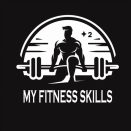INTRODUCTION TO FITNESS TIPS
Navigating the intricate landscape of fitness tips can often feel like embarking on a labyrinthine journey, filled with myriad choices, methodologies, and approaches. In an era where information is at our fingertips, discerning the most effective and sustainable fitness tips can be a daunting task. However, at the heart of this endeavor lies a profound truth: fitness tips is a multifaceted discipline, encompassing not only physical exertion but also mental fortitude, nutritional wisdom, and holistic well-being.
At the outset, it’s imperative to recognize that fitness tips is a deeply personal journey, shaped by individual aspirations, limitations, and preferences. What resonates with one person may not necessarily align with another, underscoring the importance of customization and adaptability. With this foundational understanding, let us delve into a compendium of fitness tips designed to empower, inspire, and guide individuals on their quest for optimal health and vitality.
Set Clear, Attainable Goals: The cornerstone of any successful fitness tips journey lies in establishing clear, realistic objectives. Whether it’s increasing muscle mass, shedding unwanted pounds, or enhancing cardiovascular endurance, delineating tangible goals provides a roadmap, serving as a source of motivation and direction.
Prioritize Consistency Over Intensity: While the allure of high-intensity workouts and rapid transformations can be enticing, the adage “slow and steady wins the race” holds merit in the realm of fitness. Consistency fosters sustainable progress, allowing the body ample time to adapt, recover, and thrive. Aim for regular, moderate exercise routines interspersed with periods of rest and recovery to optimize results.
Embrace Variety: The human body possesses a remarkable capacity for adaptation. To stave off plateaus and prevent monotony, incorporate a diverse array of exercises, encompassing strength training, cardiovascular activities, flexibility exercises, and functional movements. Variety not only challenges different muscle groups but also fosters holistic development, enhancing overall fitness tips and resilience.
Prioritize Nutritional Excellence: The adage “you can’t out-train a bad diet” underscores the pivotal role of nutrition in the fitness tips equation. Adopt a balanced, nutrient-dense diet rich in whole foods, encompassing lean proteins, complex carbohydrates, healthy fats, and an abundance of fruits and vegetables. Hydration, too, remains paramount; aim to consume adequate water throughout the day to support cellular function, optimize metabolism, and facilitate recovery.
Listen to Your Body: Amidst the fervor of pursuit, it’s easy to overlook the body’s signals and cues. Cultivate a heightened sense of self-awareness, attuning to signs of fatigue, discomfort, or overexertion. Periodically assess your energy levels, recovery capacity, and overall well-being, adjusting your regimen as needed to ensure sustainability and longevity.
Prioritize Recovery: In the relentless pursuit of progress, recovery often assumes a peripheral role. However, it’s during periods of rest that the body undergoes repair, regeneration, and growth. Incorporate rest days, prioritize quality sleep, and consider integrating modalities such as stretching, foam rolling, and massage to alleviate muscle tension, enhance circulation, and expedite recovery.
Seek Expert Guidance: Navigating the complexities of fitness tips can be daunting, necessitating guidance, support, and expertise. Consider enlisting the services of certified fitness professionals, nutritionists, or health coaches who can provide personalized insights, tailored strategies, and evidence-based recommendations to optimize your journey.
Cultivate a Growth Mindset: At its core, fitness tips is as much a mental endeavor as it is physical. Embrace a growth mindset, viewing challenges as opportunities for growth, setbacks as learning experiences, and progress as a testament to your resilience and dedication. Celebrate small victories, cultivate self-compassion, and remain steadfast in your commitment to continuous improvement.
In conclusion, the pursuit of fitness tips is a multifaceted odyssey, replete with challenges, discoveries, and transformative experiences. By embracing a holistic approach, encompassing physical exertion, nutritional wisdom, mental fortitude, and holistic well-being, individuals can unlock their full potential, fostering vitality, resilience, and a profound sense of fulfillment. As we navigate this journey, let us embrace these fitness tips as beacons of guidance, empowerment, and inspiration, propelling us towards a life of health, vitality, and holistic flourishing.
1.STAY HYDRATED
Staying hydrated is essential for maintaining good health and supporting various bodily functions. Water plays a vital role in digestion, nutrient absorption, temperature regulation, and joint lubrication. When it comes to physical activity, proper hydration becomes even more crucial. During exercise, your body loses water through sweat, and inadequate fluid intake can lead to dehydration. Dehydration can impair performance, cause fatigue, and increase the risk of heat-related illnesses. To stay properly hydrated, it’s important to drink water regularly throughout the day, not just when you feel thirsty.
The general recommendation is to consume about 8 cups (64 ounces) of water per day, but individual needs may vary based on factors like age, weight, activity level, and climate. A good indicator of hydration is the color of your urine – light yellow generally suggests proper hydration. For workouts, aim to drink water before, during, and after exercise. If the activity is intense or lasts longer than an hour, you might benefit from a sports drink containing electrolytes to help replace sodium, potassium, and other minerals lost through sweat.
In hot weather, you may need to increase your fluid intake to compensate for additional fluid loss through sweating. Pay attention to your body’s signals, and don’t wait until you feel thirsty to start drinking water.
In summary, maintaining proper hydration is a simple yet crucial aspect of overall well-being, and it plays a significant role in optimizing your physical performance and recovery.
2.EXERCISE IN THE MORNING
Exercising in the morning can have several benefits. It jumpstarts your metabolism, increases alertness, and sets a positive tone for the day. Morning workouts can also help regulate your circadian rhythm, potentially improving sleep quality. Choose a form of exercise you enjoy, whether it’s a brisk walk, yoga, or a full workout routine, and make it a consistent part of your morning routine for optimal results.
3.INCORPORAT RESISTANCE TRAINING
Incorporating resistance training into your morning routine can add significant benefits to your overall fitness. It helps build and maintain muscle mass, boosts metabolism, and enhances functional strength. Consider bodyweight exercises like squats, lunges, and push-ups or use resistance bands and dumbbells for added challenge.
A well-rounded resistance training routine can improve your posture, increase bone density, and contribute to a toned physique. Start with a warm-up to prepare your muscles and joints, then include a mix of compound exercises targeting major muscle groups.
Remember to prioritize proper form over heavy weights, gradually increasing intensity as your strength improves. Aim for a balanced routine, alternating muscle groups and allowing for recovery days. Combining resistance training with cardiovascular exercises creates a comprehensive fitness tips regimen for a healthy and strong start to your day.
4.TRACKING PROGRESS
Effective progress tracking is crucial for a successful fitness tips journey. Consider the following tips:
- Set Clear Goals Define specific, measurable, and realistic fitness goals. Whether it’s weight loss, strength gain, or endurance improvement, having clear objectives provides direction.
- Keep a Workout Log Record your exercises, sets, reps, and weights lifted during each session. This helps track your strength progress and allows you to adjust your workouts accordingly.
- Take Regular Measurements Track changes in your body measurements, such as waist circumference, hips, and other key areas. This provides a more comprehensive view of your progress than relying solely on the scale.
- Use Fitness tips Apps There are various apps designed to track workouts, nutrition, and overall progress. They can help you stay organized, set reminders, and analyze trends over time.
- Monitor Nutrition Keep a food diary to track your daily intake. Understanding your nutrition helps correlate it with your fitness results.
- Take Progress Photos Periodically take photos from different angles to visually assess changes in your physique. Sometimes, changes that aren’t immediately apparent in the mirror become noticeable over time.
- Measure Fitness tips Levels Regularly assess your fitness tips levels by performing benchmark workouts or tests. This could include timed runs, strength assessments, or flexibility tests.
8.Listen to Your Body Pay attention to how your body feels and performs. If you consistently feel stronger, more energized, or notice improved endurance, these are positive signs of progress.
Consistency is key, and tracking your progress provides valuable insights into what’s working and where adjustments may be needed. Celebrate small victories along the way to stay motivated on your fitness tips journey.
5.TRY GROUP EXERCISE
Group exercise can be a motivating and enjoyable way to stay active. Joining group fitness tips classes or activities offers several benefits:
1.Motivation The energy of a group can inspire and push you to give your best effort during the workout.
2.Social Connection Group exercise provides an opportunity to meet new people who share similar fitness goals. It can enhance your social well-being and make exercise more enjoyable.
3.Structure and Variety Classes often follow a structured format and offer a diverse range of workouts. This can keep your routine interesting and challenge your body in different ways.
4.Accountability Knowing others expect to see you in class can provide a sense of accountability, helping you stay committed to your fitness tips routine.
5.Professional Guidance Instructors provide guidance on proper form, technique, and progression, reducing the risk of injury and ensuring an effective workout.
6.Fun Factor Group workouts are often designed to be fun and engaging, incorporating music and social interaction to make the experience enjoyable.
Whether it’s a dance class, spinning session, or boot camp, exploring different group exercise options allows you to find activities that align with your interests and fitness tips preferences. It’s a fantastic way to combine fitness with a sense of community and enjoyment.
6.Warm-up and cooling down
Warm-Up
1.Increased Blood Flow Start with light aerobic activities like jogging or jumping jacks to raise your heart rate and increase blood flow to your muscles.
- Dynamic Stretching Perform dynamic stretches that mimic the movements you’ll do during your workout. This helps improve flexibility and prepares your muscles for more intense activity.
3.Joint Mobility Exercises Incorporate movements that target the major joints, promoting better range of motion and reducing the risk of injury.
4.Progressive Intensity Gradually increase the intensity of your warm-up to match the intensity of your main workout.
Cool Down
1.Gentle Cardio Slow down gradually by engaging in low-intensity aerobic activity, such as walking.
2.Static Stretching Perform static stretches, holding each stretch for 15-30 seconds. Focus on major muscle groups used during your workout.
3.Deep Breathing Incorporate deep breathing exercises to help lower your heart rate and promote relaxation.
4.Hydration Rehydrate by drinking water to replace fluids lost during exercise.
5.Reflect Take a moment to reflect on your workout. Consider what went well and how you can improve for the next session.
Both warming up and cooling down contribute to injury prevention, flexibility improvement, and overall workout effectiveness.
7.EAT A BALANCED DIET
- Include a Variety of Foods Ensure your diet consists of a variety of fruits, vegetables, whole grains, lean proteins, and healthy fats.
- Portion Control:Pay attention to hunger and fullness cues, and try not to eat in front of screens to stay aware of your intake.
- Limit Processed Foods: Minimize the consumption of processed and refined foods, which often contain added sugars, unhealthy fats, and fewer nutrients.
- Balance Macronutrients: Ensure a balance of carbohydrates, proteins, and fats in your diet..
- Moderation and Variety: Enjoy treats and indulgent foods in moderation.
- Mindful Eating: Pay attention to what and how you eat.
- Consider Dietary Preferences and Restrictions: Tailor your diet to your individual needs, taking into account any dietary restrictions, allergies, or personal preferences.
Remember that nutritional needs can vary from person to person, so it’s essential to listen to your body and make adjustments based on your individual requirements.
8. PLANING REST DAY
Incorporating rest days into your workout routine is crucial for recovery and overall well-being. Here are some tips for planning rest days:
1.If you experience excessive fatigue, soreness, or signs of overtraining, it may be time for a rest day.
2.Schedule Regular Rest Days Plan specific days in your weekly schedule dedicated to rest. This helps prevent burnout and allows your body to recover adequately.
3.Active Recovery Consider incorporating light activities on rest days, such as walking, stretching, or yoga. This promotes blood flow to aid recovery without intense physical stress.
4.Rotate Intensity If you engage in different types of workouts, alternate between high-intensity and low-intensity days. This variation can reduce the risk of overuse injuries.
5.Hydration and Nutrition Use rest days to focus on hydration and proper nutrition. Adequate nutrients and hydration support recovery processes.
6.Sleep Prioritize quality sleep on rest days. Sleep is a crucial component of recovery and muscle repair.
7.Mental Rest Physical rest is not the only aspect of recovery. Take time for mental rest by engaging in activities you enjoy and reducing stress.
Remember that rest days are not a sign of weakness but an integral part of a well-designed fitness program. They contribute to improved performance, injury prevention, and long-term sustainability in your fitness journey.
NEST POST – TRICEPS WORKOUT

%%
Feel free to visit my web blog – Order Revive CBD
Hello everyone, it’s my first pay a quick visit at this web site, and piece of writing is in fact fruitful for me, keep up
posting such articles or reviews. cbd масло za kakvo seizpolzawa
%%
Feel free to visit my web-site – Native Path Collagen Powder
%%
Have a look at my blog post – Everyday Dose Mushroom Coffee Review
↑ Nieuw in Nederland: Het leven van recent gemigreerde
Bulgaren en Polen, blz. Sjoerd blijft thuis om zijn moeder te steunen die het nog steeds
erg moeilijk heeft met de dood van Edwin.
%%
Also visit my page … Lean Bliss
%%
Stop by my web-site … Slim Sculpt Keto ACV
Hi just wanted to give you a quick heads up and let you know a few of the images aren’t loading properly.
I’m not sure why but I think its a linking issue.
I’ve tried it in two different web browsers and both show the same outcome.
как се използва cbd масло
ok i’ll try to fix it quickly
Удивительно пользователь приятно веб-сайт.
Огромный информация доступный несколько кликов.
Посетите также мою страничку времето пулия италия
What i do not understood is actually how
you are no longer really much more well-favored than you may be right now.
You are very intelligent. You realize therefore significantly
in the case of this subject, made me in my opinion believe
it from a lot of numerous angles. Its like men and women aren’t involved
unless it is something to do with Girl gaga!
Your own stuffs excellent. At all times care for it up!
Serkan Koca kişisel blogu, dijital dünyanın kendine özgü bir köşesi;
sizleri özel bir çevrimiçi deneyime davet
ediyorum.
serkan koca
Puravive iss a company that sells stuff to help you bbe healthy and
feel good. They hafe a bunch of different products,
likee things to help you lose weight, tbings to help your
body get rid of toxins, stuff for your skin, annd things
to gie you more energy.
Independent Reviews and Potential Issues
Puravive claims to activate brown adipose tissue (BAT),
a special kind of fat that burns calories to create heat.
This sounnds promising, but…
http://211.45.131.206/?a%5b%5d=%3ca%20href%3dhttps%3A%2F%2Fmedium.com%[email protected]%2Fpuravive-the-lowdown-on-weight-loss-claims-and-side-effects-dc51503157f3#%3A~%3Atext%3D
Independent Reviews aand Potential Complaints
Conssidering Puravive for your weight loss journey? You’re likely bombarded with questions and
onlikne reviews. Thiss article dives deep into Puravive, exploring its reported benefits,
potential side effects, and real user experiences tto help yoou mak an informed decision.